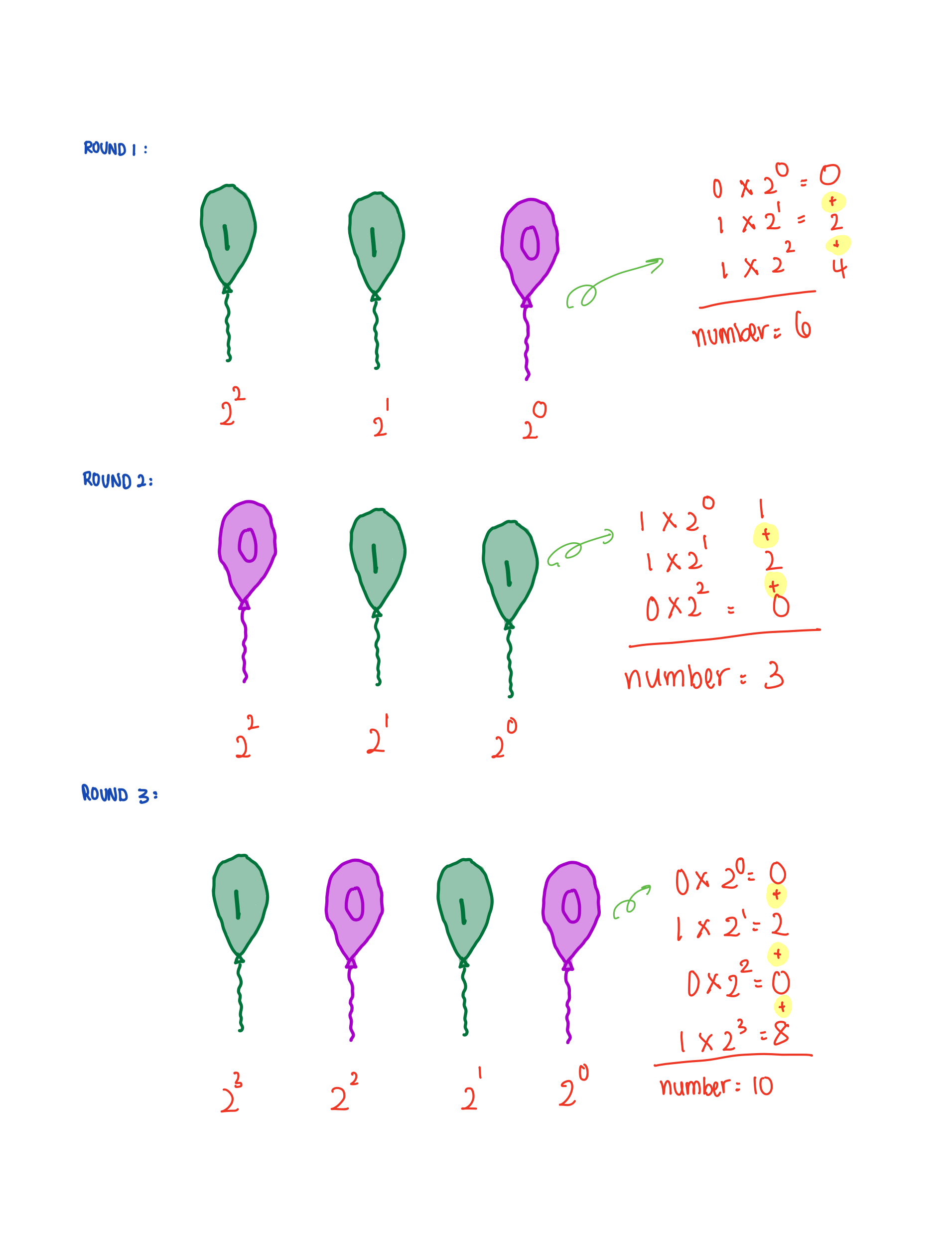Activity 2: Binary & Balloons
Introducing students to binary numbers through interactive and fun activities.
Description
In this activity, students will mix and match a set of balloons with binany numbers (0 and 1) on them and decoding the sequences into decimal numbers. This activity will introduce to studens how different binary sequencs can represent different decimal numbers.
The activity is designed with increasing difficulty based on previous coding experience, allowing students to build their programming logic as they play.
Time Required
- Estimated Time: 30-45 minutes
Materials Required
- Balloons (3-4 per group)
- Markers
- A powers of 2 reference sheet
- Materials for calculations (paper and pencils / whiteboard and markers)
Steps to Conduct the Activity
Set-Up
- Inflate 3 balloons and secure them. Blow up one more in case an additional example is needed.
- Write the binary digits 0 and 1 on the balloons using a permanent marker. Example provided in this folder:
 .
.
Difficulty Breakdown
Group Introduction
- Arrange the balloons in a line. You can use string or tape to ensure they stay in place.
- Prepare several different sequences for demonstration and practice (e.g.,
000,010,011,100,110,111). - Explain to the students that each balloon represents a binary digit (bit), and the position of the balloon determines its value in the binary number system.
- Explain that the index of the first balloon is always zero and increases from there.
- Explain the formula for decoding binary into decimal numbers.
- Provide examples of how binary is used in real life.
Beginner
- Break the students down into small groups.
- Each group should recieve a reference sheet, some balloons, and materials for caluclations.
- Have the students take turns mixing the balloons and decoding their decimal counterart.
- 🔍 Focus Skills: computational thinking, problem-solving
Intermediate
- Break the students down into small groups.
- Each group should recieve a reference sheet, some balloons, and materials for caluclations.
- Have the students take turns mixing the balloons and decoding their decimal counterart.
- Have the groups mix their balloons with one another. After both groups have reached a decoded answer, bring the groups together to compare their answers. If they got the same answer, discuss how they arrived at it.
- 🔍 Focus Skills: computational thinking, problem-solving
Discussion & Reflection
After the activity has been completed, gather the class for a quick debrief. We can ask:
- What challenges did you have with the activity?
- Did you find it easier to understand binary numbers after the activity? Why or why not?
- Can you think of other ways binary numbers might be used in the real world?
- What part did you enjoy the most?
Wrap-Up
Participating in this activity will enhance students’ computational thinking. The concept of binary numbers will help students understand the basics of how technology functions as its simplest levels. Encouraging students to create their own binary numbers and decode them will boost their computational understanding.
Learning Outcomes
By the end of this activity, students should:
- Have a basic understanding of binary numbers and their positional value.
- Be able to convert simple binary numbers to decimal numbers.
- Develop problem-solving and teamwork skills through group activities.